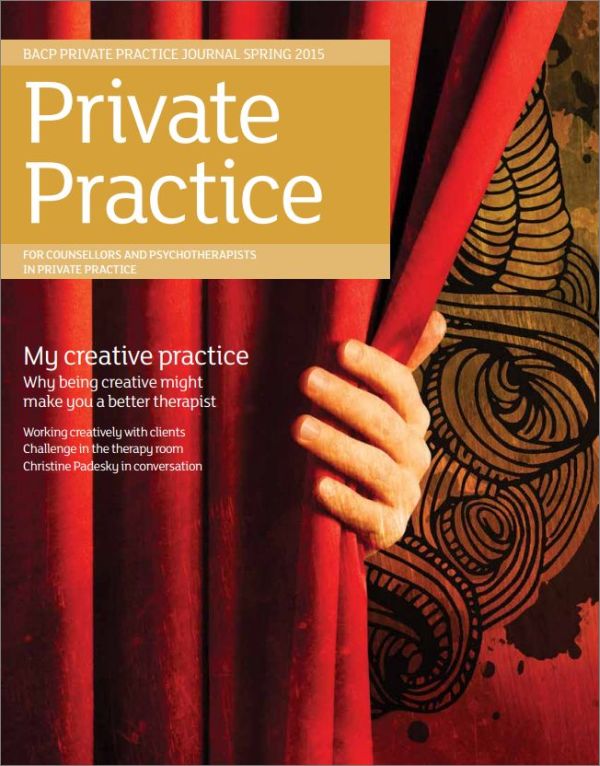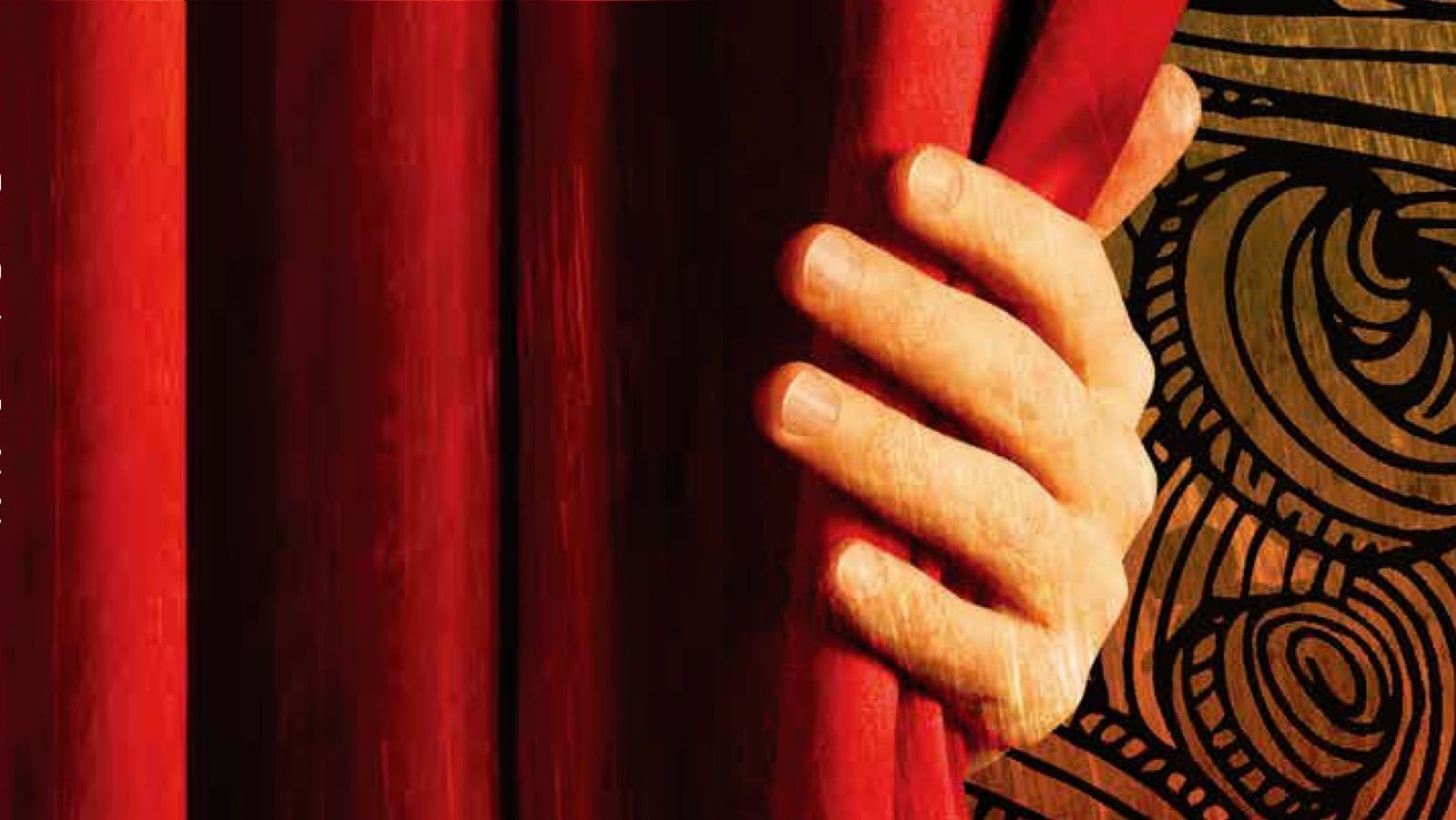In this issue
Features
Interview
Helping clients help themselves (free article)
Christine Padesky tells James Rye how she hopes to put herself out of business by teaching people skills they can use to help themselves
Ways of working
Beyond words
Doreen Fleet wonders why creative methods are not more widely used when counselling adults
My practice
My creative practice (free article)
Sandra Zecevic-Gonzalez considers the reasons why being creative makes her a better therapist
My perspective
The power of challenge
Trudi Dargan argues that the ability to challenge our clients when appropriate is a fundamental part of our remit as therapists
My perspective
Working with inner selves
John Rowan is inspired by the evolving field of dialogical self theory
My practice
Managing boundaries
Michael Kallenbach considers the challenge of maintaining boundaries when renting a room in a non-counselling setting
Regulars

A pdf of this issue is available in the Private Practice journal archive
Welcome from the editor
I’m not going to lie. As a therapist whose preference is to work long term at relational depth with my clients, I have viewed the ascendency of CBT and other brief solution-focused therapies with a mix of suspicion and unease. I have also wondered whether therapists drawn to these ways of working may (possibly unconsciously) be reaching defensively for the structure of cognitive, mechanistic protocols as a way to avoid staying with difficult feelings, and out of a need to provide a quick fix in the presence of pain and suffering that may sometimes be hard to bear.
So I’m both surprised and delighted that James Rye’s interview with the internationally acclaimed CBT therapist Christine Padesky has revised my prejudiced perspective; there is so much common sense, wisdom and compassion in what she says. Challenging my reductive view of CBT as a set of manualised methods that therapists carry out on their clients, I like Christine’s description of it as a conceptual framework within which the client is held, and her emphasis on combining and integrating it with other ways of working, rather than seeing it as a standalone therapy in itself. I also resonate with what she says about taking a non-pathologising approach that honours the strengths which enable people to manage as well as they do in the world, given the many challenges we all face during the course of our lives.
I have changed my mind. Now I’m inclined to think that CBT has been the victim of its own success, and that an unfortunate result of having been co-opted by the Government as a panacea to treat all society’s ills, is that its integrity and reputation has taken a huge dent. Like Japanese knotweed, its stealthy, ubiquitous spread has strangled and killed off the rich diversity of approaches essential to maintaining a flourishing, balanced ecosystem within our profession. Through having been dumbed-down and bastardised, an undoubtedly useful approach when appropriately integrated and applied, has been misunderstood and maligned.
A theme in the interview that is picked up and developed in two linked articles in this issue is the vital role that imagery and metaphor play in therapy. Christine talks of her interest in research from cognitive psychology and neuroscience that is enhancing understanding of how our minds think in much more holistic ways than we often imagine they do. This has vital implications for therapy because, as she says, ‘We are learning so much about thought processes and finding that the most important parts often aren’t in words but they are in images… [and] in terms of [our] work with clients, imagery and metaphor are two of the main ways that we can tap into these other systems of knowing and thinking about things.’
When clients have strong emotional reactions or are stuck in ruts of behaviour patterns, Christine argues we can bring about change more quickly through working with imagery and metaphor. Sharing the success she has had incorporating creative ways of working into her practice, Doreen Fleet writes that an overreliance on structure in therapy can inhibit freedom in exploration. Sandra Zecevic-Gonzalez expands on this by considering the benefits for therapists of participating in creative pursuits. As a therapist who’s also involved in amateur theatre, Sandra believes her creative endeavours help make her the best therapist she can be. She cites research by Ruth Richards, a professor at Harvard Medical School, which finds that creative behaviours make us more conscious, non-defensive, collaborative, courageous and resilient. I know I find inspiration from my own creative activities. They replenish my ‘inner reservoir’ and bring joy and balance to my life, which is also essential for my work; for, as Sandra asks: ‘How else are we to accompany [our clients] through the darkness, if we have lost our own way to the light?’
You’ll notice some changes to this issue. As part of our continuing improvements to the journal we’ve been hard at work tweaking the layout. Reflecting the growth in the size of the division’s membership, we’ve also increased the number of pages by four. And responding to feedback from the reader survey, we include a regular new supervision column by Rosie Dansey. I like to hope these improvements are part of a gradual and significant shift within BACP to increase the profile of what, in his column as division Chair, James Rye refers to as ‘the hidden army of private practitioners’.
Alongside Rosie I’m also pleased to welcome another new columnist, BACP’s first lead advisor for the private practice sector, Patti Wallace. Since taking up the post last autumn, among other new initiatives, Patti has written a briefing paper, The Contribution of Private Practice Counselling, which I would urge you all to read. Though it may not tell you anything you don’t already know, you may find it useful and reassuring to read the arguments supporting the vital and unique contribution our sector makes to the profession as a whole in one place. Please let me know what you think.
John Daniel
Editor
privatepractice.editorial@bacp.co.uk
